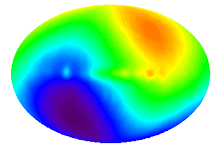The gut microbiota as an environmental factor that regulates fat
storage
The human gut contains an immense
number of microorganisms, collectively known as the microbiota. This community
consists of at least 1013 citizens, is dominated by anaerobic bacteria, and includes ≈500-1,000 species whose
collective genomes are estimated to contain 100 times more genes than our own human genome.
The microbiota can be viewed as a
metabolic “organ” exquisitely tuned to our physiology that performs functions that
we have not had to evolve on our own. These functions include the ability to
process otherwise indigestible components of our diet, such as plant
polysaccharides. Defining host signaling pathways regulated by the microbiota
provides an opportunity to identify new therapeutic targets for promoting
health.

沒有留言:
張貼留言